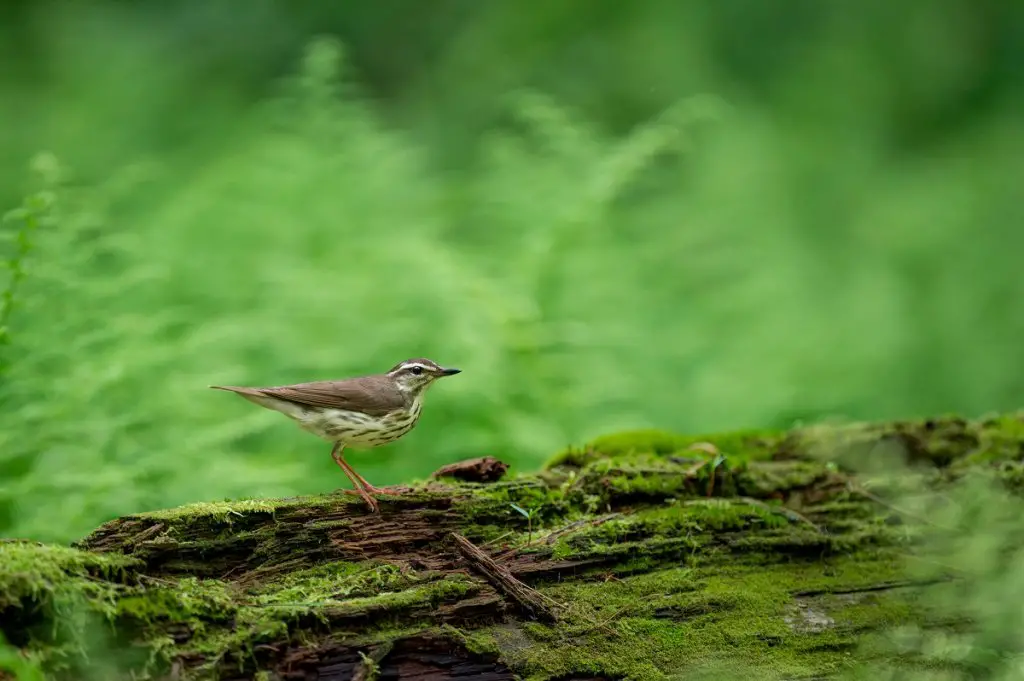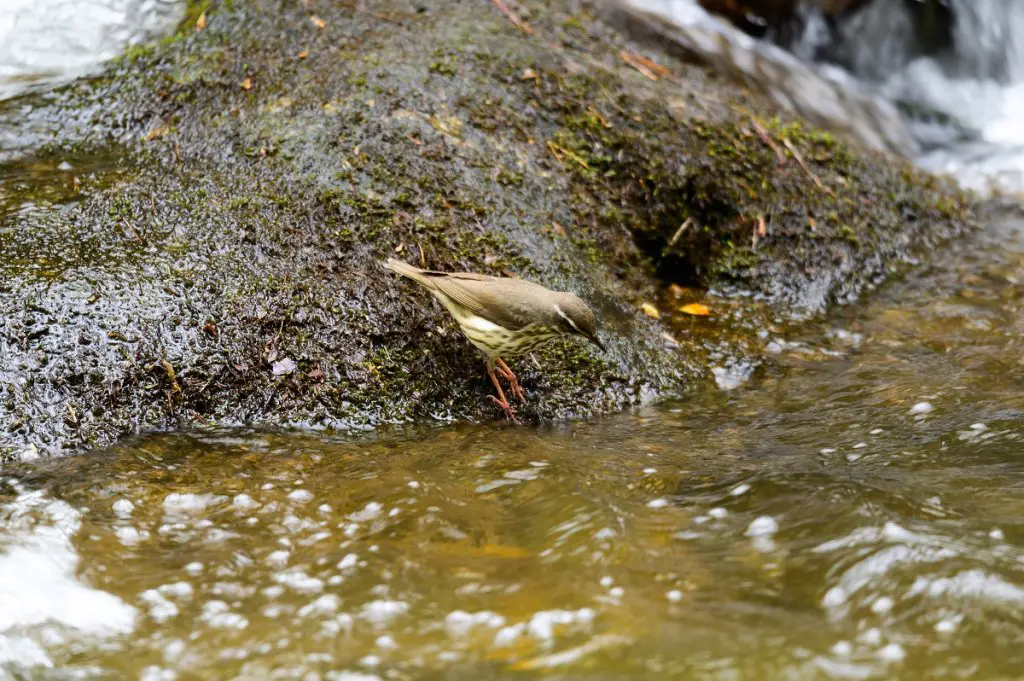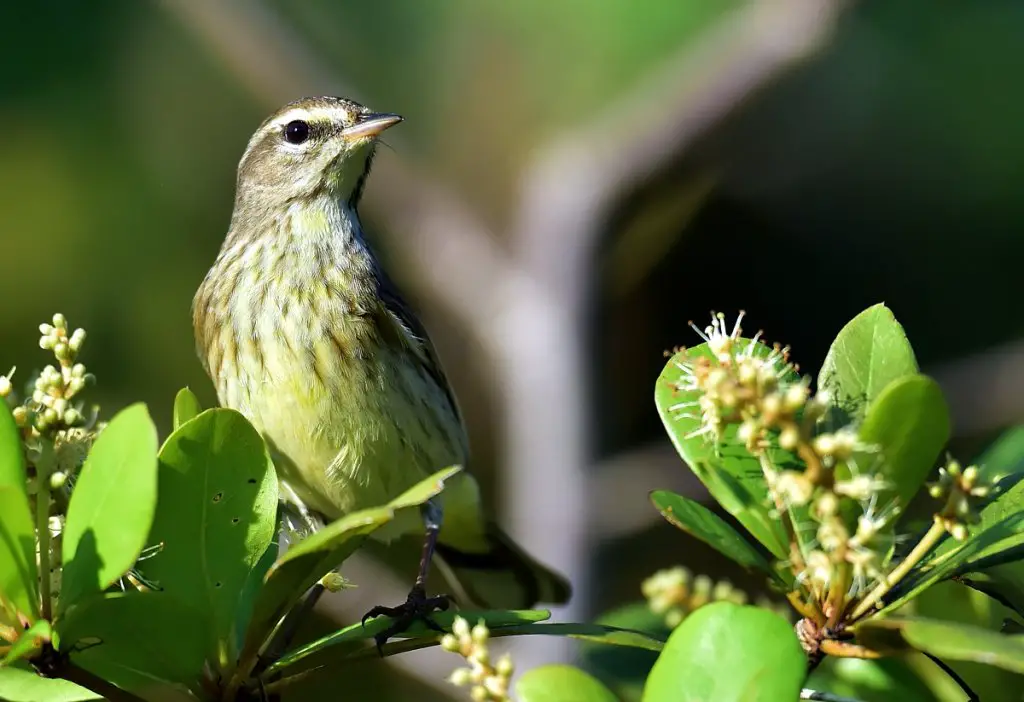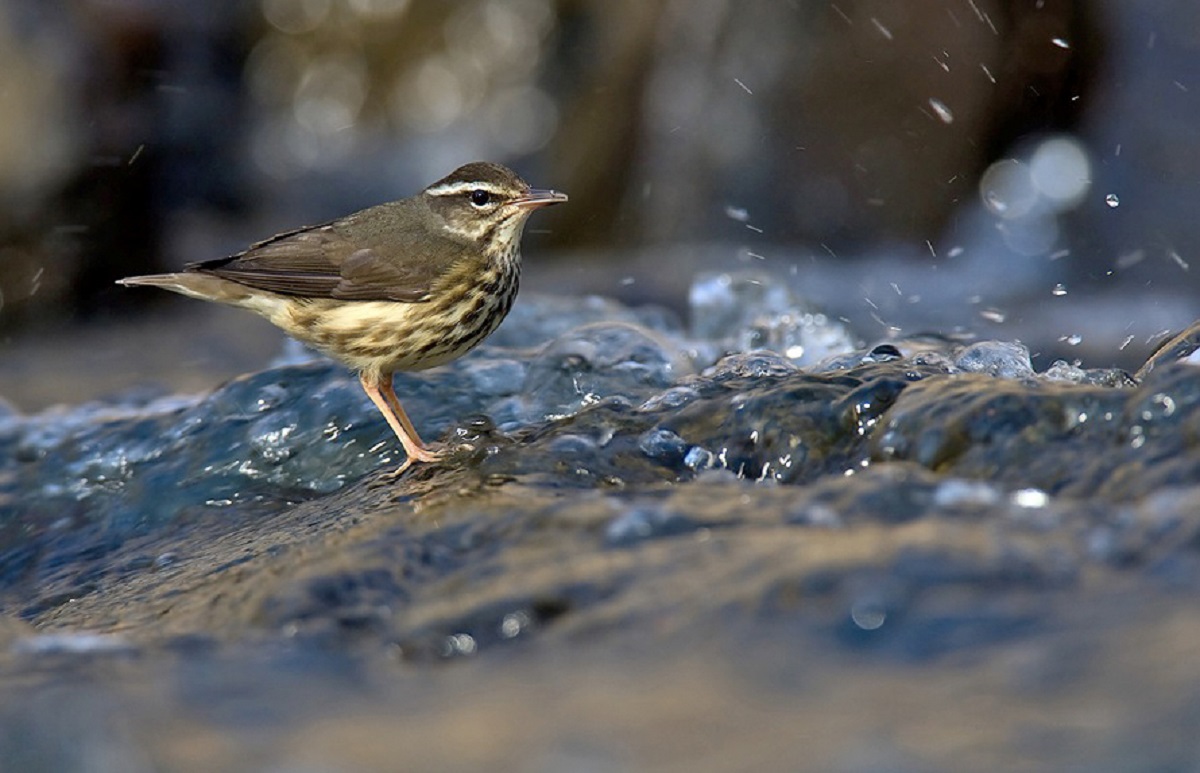The Louisiana waterthrush (Parkesia motacilla) is a New World warbler unique because it forages for food in the water. The bird breeds in eastern North America and winters in the West Indies and Central America. Though its habitat is threatened, it is increasing in population.
The Louisiana waterthrush is one of the rare North American birds that forage in water. A sweet sparrow-looking bird, you may notice it around fast streams. You may also recognize its call note — a hard chink that doesn’t vary in pitch.
Considerable research on the bird has been done at the National Aviary in Pittsburgh, Pennsylvania. This research has impacted conservation, water quality, and ecology efforts over more than 20 years of study on the Louisiana waterthrush.
Check out their main characteristics, what they like to eat, and their nesting process below.
About The Louisiana Waterthrush
The Louisiana waterthrush (Parkesia Motacilla, formerly Seiurus Motacilla) is less common today than it was 2 centuries ago. Its decline is due mainly due to a decrease in habitat, forest fragmentation, and impounding of rivers and streams. Unfortunately, this bird is highly dependent on large forest areas, which are being reduced today.
There’s also been a reduction of insect prey and water supply due to agricultural and climate changes in the birds’ environment.
Still, this sparrow-looking bird is going strong in some parts of the northeast. Though its habitat is threatened by climate change, pollution, and ecological changes, the bird is not at risk of extinction. In fact, the population is increasing.

What Color Is a Louisiana Waterthrush?
If you were to look at pictures of Louisiana waterthrush, you’d think it was a sparrow.
Plain brown above, the bird has white underparts, with black streaks, buff flanks and undertail, a strong flared white eyebrow or supercilium, and bright pink legs. The Louisiana waterthrush looks similar to the Northern waterthrush but has a white eyebrow and brighter legs.
This thrush is among the larger types, with an average length and wingspan of 6 and 9.9 inches, respectively. There are no notable distinctions between males and females besides the song. Males are also more aggressive in defending territories.
Comparison to Other Species
The Northern waterthrush (Parkesia noveboracensis) is one of the common species you can mix up with the Louisiana waterthrush. These two are closely related, and both have white underparts. Northern waterthrush has white flanks, stripped throat, and a smaller bill. The Northern waterthrush lacks the white eyebrow and has duller pink legs.
Other similar birds include a few warblers:
- Wood-warblers — might be mistaken for Louisiana waterthrush from a distance, but is greener
- Swainson’s warbler — doesn’t have dark spotting on the underparts
- Ovenbird — doesn’t have a white eyebrow

What Does The Waterthrush Eat?
The Lousiana waterthrush lives near water, so it takes advantage of nearby prey at the water’s edge. Their diet includes larval mayflies, flying insects, ants, caterpillars, small crustaceans, aquatic insects, snails, and, occasionally, seeds. They are large enough to even target salamanders, frogs, and small fish.
They do most of their foraging in running water, just like dippers who dip or bob their heads to get food. They jab their prey with their bills, often after moving leaves to uncover prey under leaves and catch flying insects by the wings. You’ll know they’re foraging by observing their rear end, which they move around.
The Nesting Process
Males are known to defend the breeding grounds, and they’ll sing until the female lays eggs. These birds nest in rock openings, mud banks, pine needles, and tree roots. Their nests are made from wet leaves, rootlets, hair, and moss.
Both parents build the nest, and the female will incubate the eggs for 12 to 13 days. There will be 4 to 6 eggs in the nest. The young will fledge after about 9 to 10 days. Unlike many species that let the babies fend for themselves once they leave the next, the Louisiana waterthrush feeds the fledgling for a month.
Louisiana waterthrush will have 1 brood annually. This species is often the victim of nest parasitism from cowbirds.

Where Does The Louisiana Waterthrush Live?
Louisiana waterthrush likes wooded swamps, ravines, and brooks. They’ll breed in clear perennial streams or mixed forests, and during the breeding season, you may notice them around fast-flowing streams. The breeding grounds include eastern North America and southernmost Canada. These migrants are occasional vagrants in the western US.
Birds that live in southern areas nest in lagoons and swamps. Those in the north prefer rapid-flowing streams and deciduous forests. Their wintering grounds include Central America, Mexico, the West Indies, South America, and the Caribbean.
Louisiana waterthrushes are early to return to their breeding grounds in the spring. They’re also among the earliest warblers to leave the breeding grounds — as early as July.

